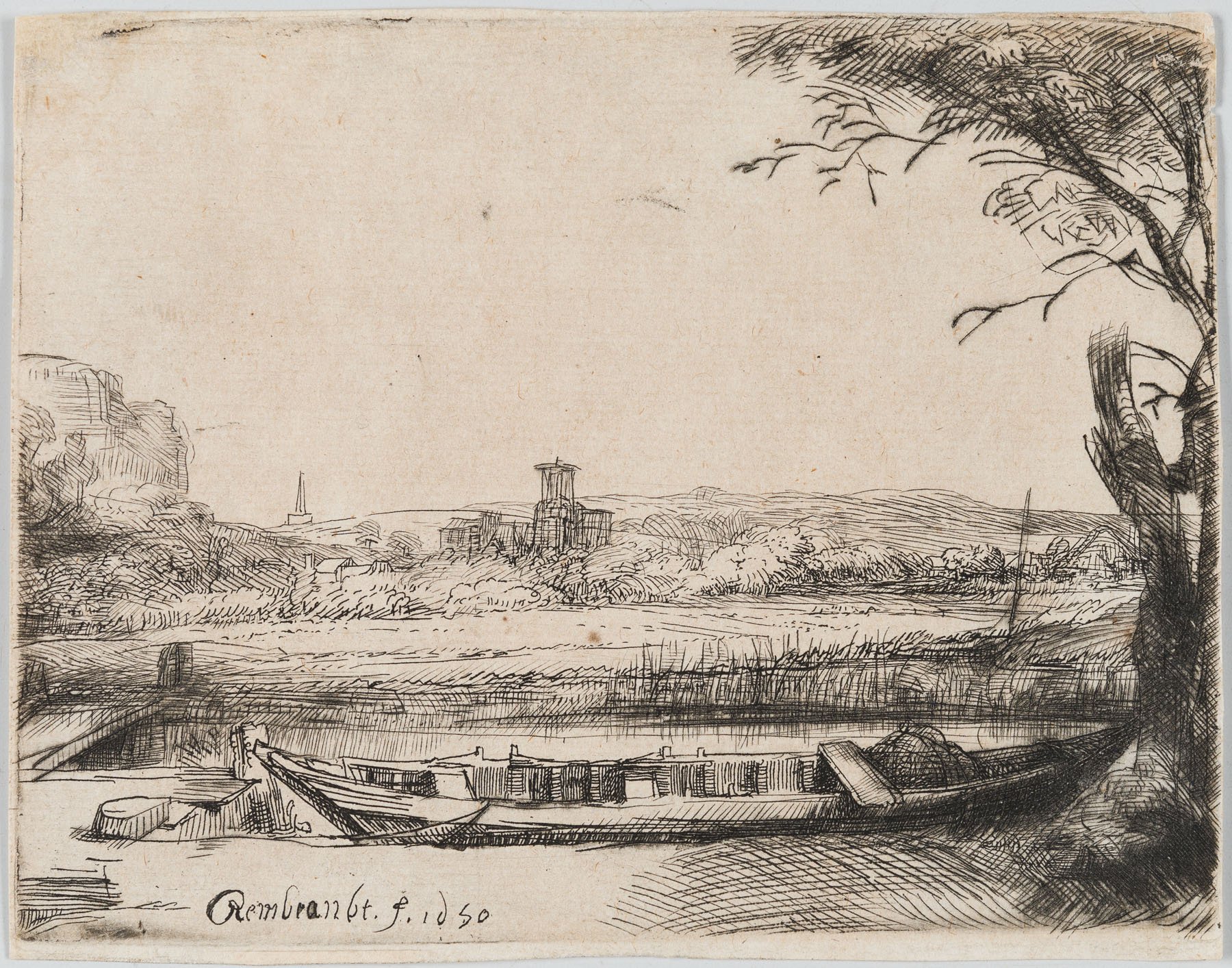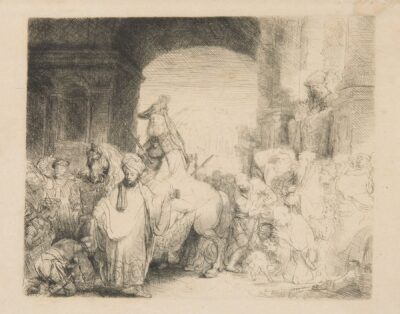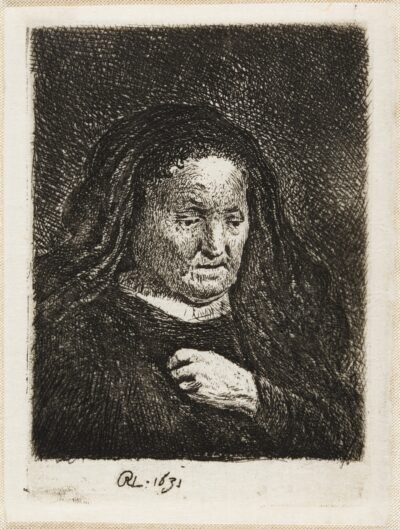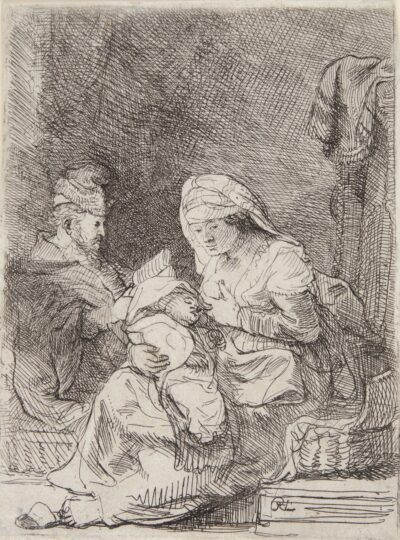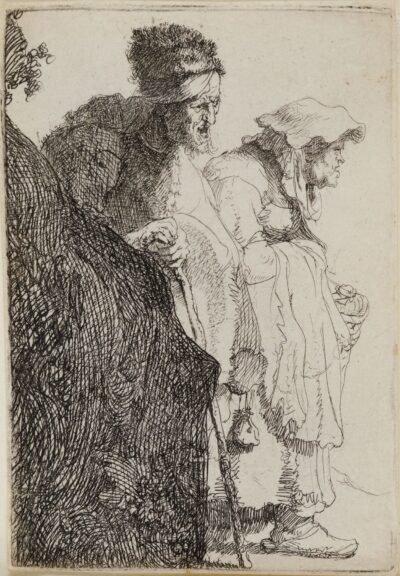Canal with a Large Boat and Bridge (‘Het Schuytje Op De Voorgrond’)
Rembrandt Van Rijn
Canal with a Large Boat and Bridge (‘Het Schuytje Op De Voorgrond’)
etching & drypoint
1650
An original Rembrandt Van Rijn etching & drypoint print.
1650
Original etching and drypoint printed in black ink on laid paper
Signed and dated in the plate lower left Rembrandt f. 1650 (the “d” and the “6” reversed)
A superb 17th century/lifetime impression of Bartsch, Usticke and New Hollstein’ second and final state of this rare etching (characterized by G.W. Nowell Usticke in his 1967 catalogue Rembrandt’s Etchings: States and Values as “a scarce little landscape,” and assigned his scarcity rating of “R+” [75-125 impressions extant in that year]), printed after the addition of the diagonal shading to the trees below the central square tower, showing substantial burr on the drypoint work, particularly in the tree at the right, and in the boat, the shoreline, and the bridge at the left.
Catalog: Bartsch 236 ii/ii; Hind 239; Biorklund-Barnard 50-B; Usticke 236 ii/ii; New Hollstein 252 ii/ii.
3 5/16 x 4 ¼ inches
One of Rembrandt’s most original landscapes, “Canal with a Large Boat and Bridge” combines the most extraordinary type of Dutch boat – a low, flat schuytie used to transport people and produce – with a structure and rock formation that no boatman in Holland ever would encounter.
Although similar in size, design and content to “Landscape with an Angler and two Swans” (Bartsch 235), and probably intended as its pendant, this etching differs in one key respect: it is completely unpopulated, a rarity among Rembrandt’s landscape prints. Indeed, the only other landscape etching without figures, “The Boathouse” (B. 231), also portrays a similar subject, but in a different setting and without any imaginary elements.
In this etching changes between states consisted primarily of additional shading. The trees below the tower are left unshaded in the first state but have hatched shadows in the second. This dark accent in the center of the composition adds emphasis to the tower. In his one other change Rembrandt ingeniously assimilated a mistake into his composition: he incorporated three vertical lines that project upward to the right of the tower in the first state into distant hills.
